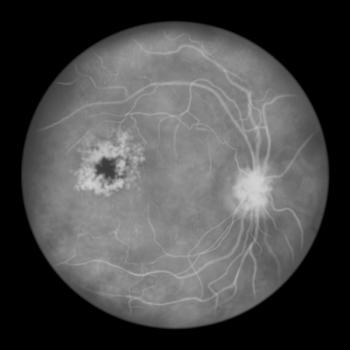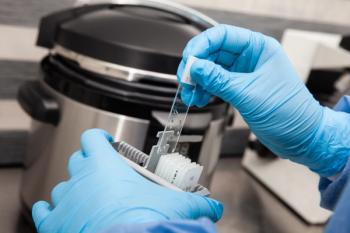When estradiol circulates in the body at high levels, it fuels hormone receptor–positive breast cancer. When estradiol is suppressed, bone remodeling is also suppressed. Therapies used to prevent estrogen receptor (ER)–positive breast cancer recurrence compete with estradiol (eg, tamoxifen, a selective estrogen receptor modulator) or deplete its levels (eg, gonadotropin-releasing hormone analogues, bilateral oophorectomy, ovarian radiation, and aromatase inhibitors). The depletion of estradiol levels causes serious bone remodeling imbalance issues, including osteoporosis, bone loss, and cortical and trabecular microarchitectural deterioration, leading to bone fragility and bone fracture.
About the Author
Grace Morrison is a professional pharmacy student attending the University of Connecticut and is part of the UConn Pharmacy Leaders Track, as well as a member of Lambda Kappa Sigma, Phi Lambda Sigma, and other professional organizations.
Denosumab, a receptor activator of nuclear factor kappa B ligand inhibitor, is effective in the prevention of bone loss and microarchitectural deterioration in postmenopausal women. In early-stage breast cancer, denosumab has been shown to reduce clinical fracture rates, and in advanced breast cancer, denosumab delays and prevents skeletal-related events.
In a randomized, double-blinded controlled trial, denosumab (60 mg subcutaneously [SC] once every 6 months for 12 months) was evaluated against matching placebo (60 mg SC once every 6 months for 12 months) 1:1. Premenopausal women (aged 18-55 years) were included with confirmed ER-positive early-stage breast cancer who were planning to receive treatment or were less than 12 weeks into starting treatment before enrollment with combined ovarian function suppression (gonadotropin-releasing hormone analogue or bilateral oophorectomy) and aromatase inhibitor. This was further modified to include patients within 12 weeks of receiving ovarian function suppression rather than an aromatase inhibitor.
The primary outcome was the mean adjusted between-group difference in total volumetric bone density at the distal tibia over 12 months. The secondary outcome was between-group differences in other volumetric bone mineral density (BMD) and microarchitectural parameters at the distal tibia and distal radius; BMD of the total hip, femoral neck, lumbar spine, and distal one-third radius by dual x-ray absorptiometry; and serum markers of bone remodeling.
Of the 117 women assessed for eligibility, 68 underwent random assignment (34 patients treated with denosumab and 34 treated with matching placebo). Sixty-one women (90%) completed at least 1 postbaseline visit, 55 women (81%) completed the study, and all patients randomly assigned to denosumab received all doses. Twelve months of denosumab therapy was effective in preventing total volumetric BMD loss at the distal tibia (mean adjusted difference [MAD], 20.8 [95% CI, 17.3-24.2; P < .01]). Similarly, decreases in total volumetric BMD at the distal radius and in the cortical and trabecular BMD were prevented with denosumab compared with placebo (MAD, 28.6 [95% CI, 21.9-35.2; P < .01], MAD, 32.9 [95% CI, 20.4-45.3; P < .01], and MAD, 9.72 [95% CI, 6.67-12.78; P < .004], respectively). Denosumab therapy also prevented the decrease in cortical thickness (MAD, 0.08; 95% CI, 0.06-0.10; P < .01) and increase in cortical porosity at the distal tibia (MAD, –1.13; 95% CI, –1.42 to –0.83; P < .01) and distal radius (MAD, –0.25; 95% CI, –0.4 to –0.09; P < .01) when compared with placebo.
BMD was preserved in the lumbar spine, total hip, femoral neck, and distal one-third radius in patients receiving denosumab but not in those with placebo, with a treatment effect as early as 6 months in the spine and hip. Decreased serum markers of bone remodeling (C-telopeptide of type I collagen and procollagen type I N-terminal propeptide) were observed with denosumab at 3, 6, and 12 months. During the study, no fragility fractures, serious adverse events (AEs) related to denosumab, or deaths in either group occurred. Overall, denosumab was shown to be well tolerated, but poor gum healing and increases in blood pressure (9% each) occurred more commonly with denosumab than with placebo (0% each).
This study showed that initiating denosumab with ovarian function suppression and aromatase inhibitor therapy significantly prevents bone loss and microarchitectural deterioration in premenopausal women with ER-positive early-stage breast cancer with no additional or unexpected AEs. Whether these bone changes will prevent fractures is unknown at this time. It is also important to note that this was a small study with a short duration (12 months), and that most study participants were non-Hispanic White; therefore, the generalizability of this data is limited. The authors recommend incorporating this into practice. However, it would be prudent to conduct larger and longer-term studies to ensure effectiveness and safety related to the drug and disease-free survival. If it is chosen to be initiated, it is important to understand that denosumab must be given when estradiol suppression is initiated, not delayed. Other complications, such as remodeling imbalances, could transpire if such delays occur. Additionally, alternate antiresorptive therapies are recommended once the drug is stopped to mitigate any potential AEs of stopping antiresorptive therapy.
REFERENCE
Ramchand SK, Ghasem-Zadeh A, Hoermann R, et al. Denosumab prevents bone loss and microarchitectural deterioration in premenopausal women with breast cancer receiving estradiol suppression therapy: a randomized controlled trial. J Clin Oncol. 2024;42(29):3466-3477. doi:10.1200/JCO.23.02309



























































































































































































































